
Join free, expert-led in-person workshops and online webinars Your chance to unpack the new syllabus and get answers to your questions. Register now!



Join free, expert-led in-person workshops and online webinars Your chance to unpack the new syllabus and get answers to your questions. Register now!


Early scientists worked hard to understand the world around them. One way they did this was by grouping things into categories based on what they had in common or what made them different. Classification helps us organise living things by their shared traits. Tools like classification keys help identify all kinds of organisms, from plants and animals to tiny microorganisms. Today, scientists called taxonomists still use these methods to keep discovering and organising new species.
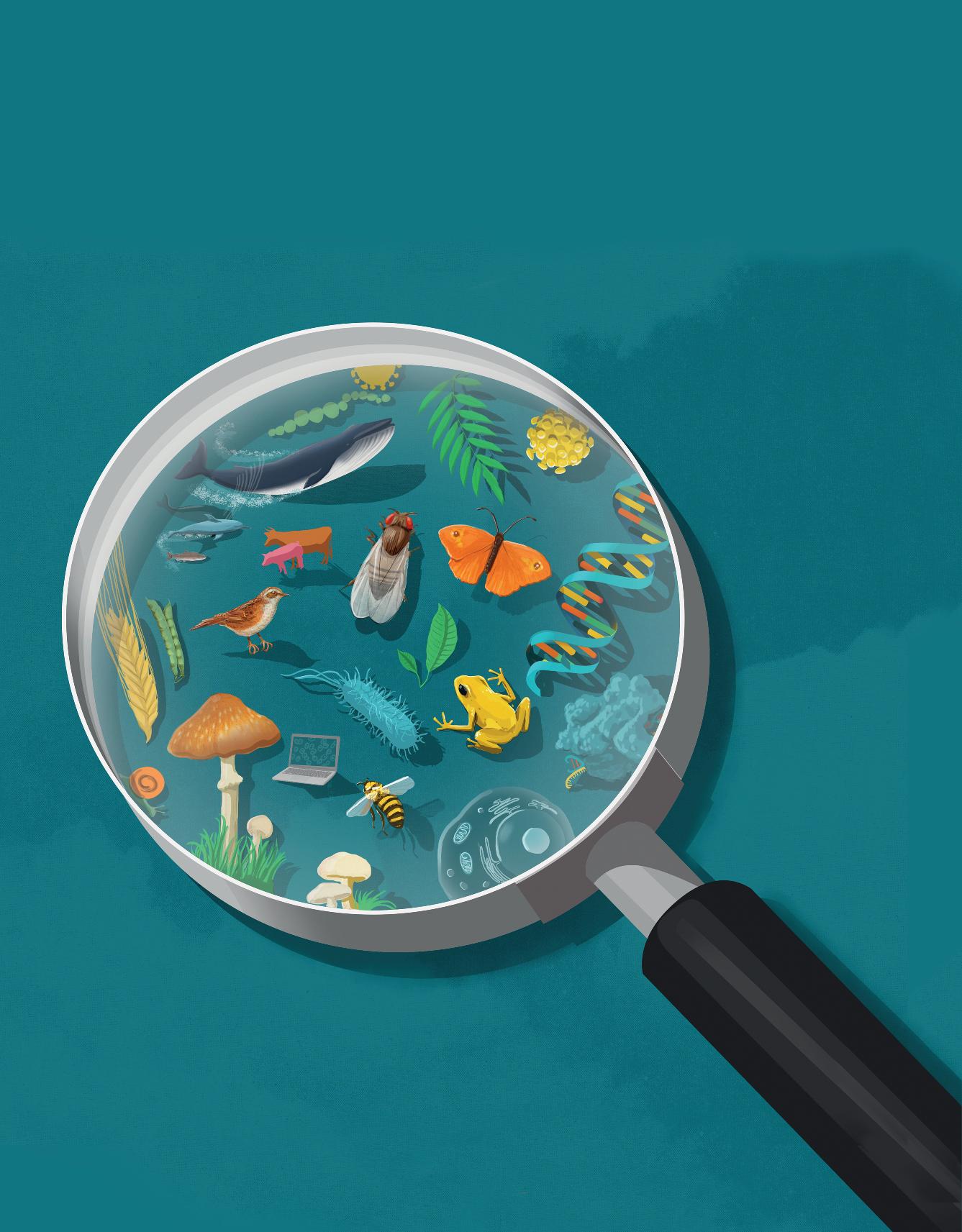
Lessons in this module
Lesson 5.1 Living organisms have characteristics in common (page 3)
Lesson 5.2 Classification keys are visual tools (page 5)
Lesson 5.3 Experiment: Classifying organisms in a local ecosystem (page 9)
Lesson 5.4 The classification system continues to change (page 12)
Lesson 5.5 Kingdoms can be used to classify organisms (page 15)
Lesson 5.6 Challenge: Classifying living things (page 18)
Lesson 5.7 Animals that have no skeleton are called invertebrates (page 19)
Lesson 5.8 Experiment: Dissecting skeletons (page 22)
Lesson 5.9 Investigation: Identifying invertebrates (page 24)
Lesson 5.10 Vertebrates can be organised into five classes (page 25)
Lesson 5.11 Challenge: Who are the vertebrates? (page 28)
Lesson 5.12 Plants can be classified according to their characteristics (page 29)
Lesson 5.13 Investigation: Identifying plants (page 32)
Lesson 5.14 The first Australian scientists classified their environment (page 33)
Lesson 5.15 Science in context: Taxonomists classify new species (page 36)
Lesson 5.16 Review: Classification (page 39)
Learning intentions and success criteria
→ Biology is the study of living organisms and what it means to be alive.
→ Living things move, reproduce, need nutrition, grow, respond to change, exchange gases, produce waste and need water.
→ Dead organisms were once living.
It has taken many years of observation and discussion for scientists to develop eight characteristics that all living things – plants, animals and even microorganisms such as bacteria – have in common. To remember all eight characteristics, think of: MR N GREWW.
Animal movements are easy to see. But do plants move? Look at the leaves on an indoor plant – they usually face the window (a source of light). Turn the plant around so that the leaves face into a darker part of the room. In a few days, the leaves will again be facing the window. The leaves have moved by themselves. Sunflowers turn their heads to follow the Sun as it moves across the sky each day (Figure 1).
reproduction the production of offspring by a sexual or asexual process
autotroph an organism that makes its own food
heterotroph an organism that absorbs nutrients from other living things
Living things can make new individuals that grow up to look like them. Animals mate and produce offspring, plants produce seeds that grow into new plants, and bacteria divide to produce more bacteria. Reproduction is the process by which living things make new life.
All living things need nutrients to survive. Animals obtain most of their nutrients by eating food and drinking. Plants absorb nutrients through their roots and fungi feed on decaying organisms. Plants are autotrophs, which means they make their own food. Animals and fungi are heterotrophs, which means they rely on other living things for food or nutrients.



All living things grow during their lives. Mushrooms start off as tiny spores. Humans are born as babies and develop into children, teenagers and then adults. Insects hatch from eggs as larvae and then metamorphose into adult insects (Figure 4). In every case, living things, when fully grown, resemble their parents.
When an animal realises it is being chased, like the springbok in Figure 5, it runs. It is responding to stimuli (the sight and sound of a charging predator) or to changes in its environment (the sudden brush of leaves or movement of shadows). The sunflowers shown in Figure 1 are responding to the changing stimuli of light and warmth.
Plants and animals have organs and structures that allow them to exchange oxygen and other gases with their environment. Some animals, such as humans, use their lungs to inhale and then exhale. Other animals, such as fish and the axolotl (Figure 6), have gills. Some animals, such as worms, breathe through their skin. Even plants need to exchange gases with their environment.
We, like other animals, take in food, water and air to fuel our bodies. Chemical reactions occur in our bodies and wastes are produced as a result. We get rid of these wastes by exhaling, sweating, urinating and defecating (emptying our bowels). Plants get rid of their wastes through their leaves.
All living things need water; it is required for many jobs. For example, it transports substances in our bodies to where they are needed, and it is involved in many essential chemical reactions. In animals such as humans, water helps maintain body temperature. No wonder a large proportion of our body is water!

4 Caterpillars grow and change (metamorphose) into butterflies.

5 The springbok (Antidorcas marsupialis) responds quickly to any movement or sound. This keeps it alive.


7 Sweating is one way humans get rid of waste products from their bodies.

8 The human body uses water for many jobs, including maintaining body temperature.
Something classified as living needs nutrition and water, and is able to move by itself, reproduce, exchange gases, grow, respond to stimuli and produce wastes. If something does not have these characteristics, it would seem logical to assume that it is non-living. But what about something that is dead? Something dead, such as a dried flower or an Egyptian mummy, was once living; when it was alive it did have the characteristics of a living thing. Something non-living, such as a computer or your watch, has never had these characteristics.
Check your learning 5.1
Check your learning 5.1 Complete these questions online or in your workbook.
Retrieve
1 Name the two broad groups scientists use to classify unknown things.
2 Identify what the letters of MR N GREWW represent when discussing the characteristics of living things.
Analyse
3 With a partner, or by yourself, classify the following things as living, non-living or dead: a eucalyptus tree
b water
c paper d robot
e leather belt f wombat g roast chicken h plastic chair.
4 C ontrast non-living and dead things.
Apply
5 Identify the items listed in question 3 that are dead. Justify your answer (by defining the term “dead” and comparing the definition to the item).
6 Identify a bushfire as either living, non-living or dead. Justify your answer (by describing the characteristics of a living thing and comparing it with the properties of a fire).
→ A key is a visual tool used in the classification of organisms.
→ A branched key can show the relationship between different organisms.
→ Scientists use keys to identify the scientific name of an organism.
When you visit an outdoor market, you might wander around for some time before you find what you want. A department store is more organised, with similar items grouped together. Scientists use a system like this to sort things into groups or classify them. A visual tool called a key helps scientists identify the names and descriptions of organisms.
One common type of key is called the dichotomous key (pronounced “dye-COT-o-muss”) because the branches always split into two (di meaning “two”). Scientists use a dichotomous key to make simple “Yes” or “No” decisions at each branch. For example, does the animal have fur (Yes/No)? Does it have scales (Yes/No)? Each answer leads to another branch and another question. This key only works if the animal has already been identified by someone else. A newly discovered organism would need to be studied first and then new branches would be added to an existing key.
If a scientist is going out into the bush to study plants and animals, a large drawing like the one in Figure 1 may not be useful. Instead, a field guide or tabular key, such as that shown in Table 1, can be used. This is used in the same way as the diagram version (Figure 3). Two choices are offered at each stage. When a decision is made, the scientist is led to the next choice between two characteristics.
Dr Redback loved to send out Christmas cards with a family photo on the front. One year, just for fun, he included two dichotomous keys to help everyone identify all his family and pets.
Use the picture of Dr Redback’s family (Figure 1) and one of the keys provided (Figure 2 and Table 1) to work out who is who.
classify arrange in classes or categories key (in biology) a visual tool used to classify organisms
dichotomous key a diagram used in classification; each “arm” of the key contains two choices
Wings
Wings
Wings
Stripes
Spots
Stripes
Spots
Stripes
Spots
Figure 3 A dichotomous key to help identify 16 different types of beetles.
Wings
Wings
Check your learning 5.2 Complete these questions online or in your workbook.
Remember and understand
1 Define the term “dichotomous key”.
2 State why it is called “dichotomous”.
3 Define the term “classify”. Apply
4 T he characteristics used to identify organisms should be permanent physical characteristics that are easy to observe. Characteristics that change over time, such as size and behaviour, are not as reliable for identifying species. For each of the characteristics listed below, consider if it is appropriate for use in a dichotomous key of birds and justify your answer (by explaining how it can or cannot be used to identify a bird):
c a broken leg d sitting on the ground.
a eating bird seed b a blue stripe above the eye
Figure 4 Birds sitting on a tree branch.

6 C reate a tabular key that could be used to identify laboratory equipment. Include these items: tripod stand, Bunsen burner, gauze mat, 50 mL beaker, 150 mL beaker, 100 mL measuring cylinder, 10 mL measuring
cylinder, 500 mL beaker, 500 mL measuring cylinder, retort stand, clamp.
7 Use the dichotomous key in Figure 3 to help with the following tasks.
a Identify the four beetles in Figure 5.
b C reate a simple sketch of the following:
i f rupe beetle
ii gr ing beetle
iii gr ipe beetle
iv f rong beetle.

Figure 5 Four types of beetles.
Skills builder: Processing and analysing information
8 Refer to Figure 2. How might you adjust the dichotomous key if Dr Redback’s “family” included his sister, Melinda; his mother, Frances; his two daughters, Stef and Gemma (Stef wears glasses); and his pet lizard named Stealth but not a bird named Charlie?
Aim
To design a dichotomous key to classify Australian birds
In the following table you are given a list of Australian birds with key features such as the
size, habitat and diet. Think about how you can sort these birds into two groups. You might like to consider characteristics such as their ability to fly or the kind of niche or ecosystem they are found.
Bird Size Habitat Diet Description
Scarlet robin 13 cm
Grey fantail 16 cm
Open forest and woodland Insects
Any habitat with trees Insects
Willie wagtail 20 cmOpen forest and woodland Insects
Australian magpie 40 cm
Woodland, urban and rural clearings
Insects, spiders, worms, snails
Magpie-lark 27 cmMost habitats except forest Insects, spiders
New Holland honeyeater 18 cm
Open forest, woodland, urban gardens Nectar
Silver gull 40 cmAny watered habitatWorms, fish, insects, shellfish
Little egret 56 cmTidal mudflats, wetlands, mangroves
White-faced heron 70 cm
Insects, fish, frogs
Any watered habitatFish, insects, frogs
Spotted harrier 60 cmOpen forest and woodland Birds, mice, rats, rabbits, lizards
Pink and grey galah 36 cmOpen forest and woodland Grass, seeds
Pied cormorant 85 cm
Freshwater, estuaries, coastal inlets
Fish, shellfish, frogs
Goshawk 55 cm Forest and woodland Small mammals, birds, reptiles
Jabiru 115 cm Swamps, mangroves Fish, shellfish, frogs
Coot 38 cm Swamps, lakes
Water weed, small plants
Black swan 130 cm Wetlands, estuaries Water weeds, plants, algae
Oystercatcher 43 cmMudflats, sandbanks, beaches Shellfish
Black-shouldered kite 36 cmOpen woodland, urban and rural clearings
Wedge-tailed eagle 95 cmOpen forest, woodland, grassland
Black-backed, red-breasted, white patch on forehead, white in wing and tail
Grey with white shafts to tail feathers and white eyebrows
Black with white belly and white eyebrows
Black and white, white beak with black tip
Black and white, thin whitish bill and pale eyes
Mostly black and white, large yellow wing patch, yellow sides on tail
White head, tail and underparts, light grey back, black-tipped wings
White, dark grey-black legs, black bill, bright yellow naked face
Light blue-grey, white face, long neck, pointed grey-black bill, long yellow legs
Mice, grasshoppers
Rabbits, carrion
Purple swamphen 48 cmWetlands, swamps, lakes Reeds, grasses, frogs, snails
Emu Up to 190 cm
Open arid plains to tropical woodlands
Leaves, grasses, fruits, native plants and insects
White-spotted chestnut (brown) breast, blue-grey upper parts, owl-like chestnut facial disc, yellow eyes
Rose-pink head, neck and underparts, paler pink crown, grey back, wings and undertail
Black, white and yellow chin, grey bill, black legs and feet
Brown head, slate-grey to brown upper parts, red-brown and white barred under parts, yellow eyes
Black and white body, glossy dark greenpurple neck, massive black bill, long red legs
Dark sooty grey, white bill and forehead shield, bright red eyes
Black, white wing tips and tail tip, orangered bill with white band towards end
Black, white breast and belly, bright orangered bill, orange eye rings and legs
Pale grey above, white head, body and tail, black shoulders, red eyes, yellow legs and feet
Brown or black with wedge-shaped tail
Black above, broad dark blue collar, dark blue to purple below, white undertail, red bill, orange-red legs and feet
Shaggy grey-brown to black plumage, bare skin around the face and a striking blue neck
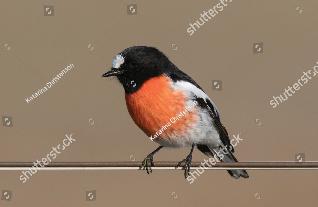


1 A list of Australian birds
a Scarlet robin
b White-faced heron
c Spotted harrier
d Pink and grey galah
e Black swan
f Black-shouldered kite
g Emu




• Compare the similarities and differences of each bird.
• Describe the similarities that will allow the birds to be divided into two groups.
• Select one of the groups and compare the similarities and differences of birds in that group.
• Describe the similarities that will allow these birds to be divided into two more groups.
• Repeat this procedure until all birds are in a group of one.
1 D raw a dichotomous key to show how you grouped the birds.
2 Describe the difficulties of classifying the birds into groups.
3 Describe how you would improve your grouping if you repeated the challenge.
Swap your dichotomous key with another group. Ask them to evaluate your key by comparing how easy it was to identify the key feature of each bird that allow it to be classified.
→ The Linnaean system has seven main levels of classification.
→ Scientific names are binomial (two names): the genus and the species.
→ The modified Linnaean taxonomy system is still used today.
When you try to find your house on Google Earth, you first look for Australia and then the state you live in. Then you narrow your search to your town, your suburb and your street, until you finally find your house.
The Linnaean taxonomy for classifying living things works in a similar way. It starts with large groups called kingdoms and then divides into smaller groups called phyla. Each phylum has several classes. The classes have orders, and so on. There are seven different levels to get to the final name of each organism: kingdom, phylum, class, order, family, genus and species. (Tip: Some people use the following mnemonic to remember the Linnaean system: “K ing P hillip C rawled O ver Four G ooey Snails”.)

Learning intentions and success criteria
linnaean taxonomy a hierarchical system of classification developed by Linnaeus in which all organisms are grouped into kingdom, phylum, class, order, genus and species, with each individual organism known by its genus and species names
binomial the double-name system created by Linnaeus to name organisms; the first name is the genus and the second name is the species genus a group of closely related species
Have you eaten a Musa sapientum lately, or have they been too expensive to buy? And did you pat your Canis familiaris this morning? The Linnaean classification system gives every living thing these double names.

Our homes can easily be found by using only the two smallest groups in an address – the street and the suburb. Information about the bigger groups, such as the country or the continent, is not really necessary.
In much the same way, an organism can also be named from the two last groupings on the Linnaean dichotomous key – the genus and the species.
In the double-name (or binomial) system, the genus group name always starts with a capital letter. The second word is the species name and it does not have a capital letter. The double name is always written using italics (sloping letters).
Phylum Chordata fish, bird, lizard, kangaroo, fox, lion, jungle cat, domestic cat
Class Mammalia kangaroo, fox, lion, jungle cat, domestic cat
Order Carnivora fox, lion, jungle cat, domestic cat
Family Felidae lion, jungle cat, domestic cat
Genus Felis jungle cat, domestic cat
Species catus domestic cat
species a group of organisms that look similar to one another, and can breed in natural conditions and produce fertile offspring
viable able to survive and grow
A species is a group of organisms that look similar to one another and can reproduce. When they breed in natural conditions, their offspring are viable, which means they are alive, healthy and are able to reproduce (in other words, they can also breed and have babies when they are adults). Domestic cats belong to the one species because they can breed and have viable kittens but they cannot breed and have viable kittens with other species.

After 250 years, scientists are still testing and modifying the Linnaean classification system. The development of microscopes led to the discovery of single-celled organisms (bacteria). This led to the number of kingdoms increasing from three –plants, animals and minerals – to the current five Animalia, Plantae, Fungi, Protista and Monera. In the 1970s, a group of organisms previously thought to be bacteria was discovered to be something else: single-celled organisms that could live in extreme conditions, such as very salty or hot waters. The genetic material (DNA) of
these organisms was different from that of other bacteria. This led to the suggestion that a sixth kingdom, Archaea, was needed. Scientists have been discussing this approach of six kingdoms and comparing it with a whole new level that comes before kingdoms.
The “three-domain system” was first suggested in 1990. This system suggests one super domain, Eukaryota, for plants, animals, protists and fungi. The single-celled organisms in kingdom Monera would then be split into two domains (Bacteria and Archaea) according to their genetic material (DNA).
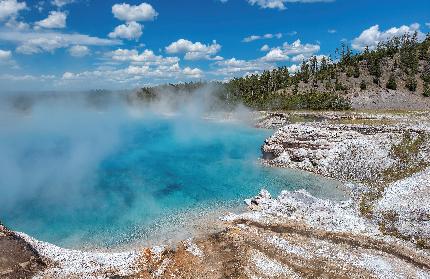

Check your learning 5.4
Check your learning 5.4 Complete these questions online or in your workbook.
Retrieve
1 Identify the person responsible for the naming system that is still used today to name living things.
2 Recall the seven levels or groups that are used to divide all living things. Write them in order from the largest group or level to the smallest level of organisation.
Comprehend
3 Ex plain how you would know whether two organisms are the same species.
4 Select three species of animal. For each animal:
a descr ibe its appearance
b identify its common and scientific name (the genus and species).
5 Identify which two organisms would be most alike: Felis catus, Canis familiaris and Felis bieti
Apply
6 Discuss how an understanding of genetic material changed the classification of bacteria.
Skills builder: Planning investigations
7 A teacher is asked to classify a species of butterfly. Suggest how they might find the information needed to discover its binomial name. (THINK: Does this require primary and secondary sources?)
Learning intentions and success criteria
→ Taxonomists are scientists who classify living things.
→ The cells of organisms have features that allow us to classify them into five kingdoms: Animalia, Plantae, Fungi, Monera and Protista.
multicellular consisting of two or more cells
unicellular consisting of only one cell; an example is bacteria
Cells are often called the building blocks of life. They can only be seen through a microscope. Think of the way bricks are used to build a house. Cells build living things in a similar way. However, there are usually many more cells in living things than bricks in a house. Any living thing with more than one cell is multicellular (Figure 1A and B). Many living things, such as bacteria, consist of only one cell. These are single-celled or unicellular organisms (Figure 1C).



taxonomist a scientist who classifies living things into groups
nucleus a membrane-bound structure in cells that contains most of the cell’s genetic material cell wall a structure that provides support around the cell in some organisms, such as plants and fungi
Taxonomists looking through a microscope ask three questions when they are trying to classify the cells of an organism:
1 Does the cell keep all of its genetic material (called DNA) inside a nucleus? The nucleus protects the DNA that carries all the instructions for living and reproducing.
2 Does the cell have a cell wall around it for extra support?
3 Does the cell use sunlight to make its own nutrients (autotroph)? Plant cells can do this, but fungi (like mushrooms) need to absorb their nutrients from other living things (heterotrophs).
These three features are used to divide all living things into five large groups called kingdoms: Animalia, Plantae, Fungi, Monera and Protista.
All organisms in the kingdom Animalia are multicellular. Each cell stores its genetic material in a nucleus but does not have a cell wall. Animals gain energy from other living things (they are heterotrophs). We belong in this kingdom. Zoologists are the scientists who study animals.
Kingdom Plantae include trees, vines, bushes, ferns, mosses, weeds and grasses (Figure 3). They all gain energy by converting the energy from sunlight into food (they are autotrophs). They are multicellular and their cells are surrounded by a cell wall. Their genetic material is stored inside a nucleus in each cell. Botanists are the scientists who study plants.
Kingdom Fungi includes mushrooms, toadstools, yeasts, puffballs, moulds and truffles (Figure 4). Some fungi grow in wood and soil, and develop from tiny spores. Fungi store their genetic material in a nucleus and do not make their own food (they are heterotrophs). Instead, they feed on the remains of dead animals and plants. Some fungi can cause diseases, such as tinea (athlete’s foot). Mycologists are the scientists who study fungi.


Kingdom Plantae: the world’s smelliest plant, genus Rafflesia , is found in South-East Asia. Its flower can measure up to 90 cm across and weigh about 11 kg, and when it blossoms it gives off a rotten meat odour that attracts insects.

Kingdom Monera is made up of the simplest and smallest living things. There are approximately 75,000 different organisms in Monera, and they are all unicellular and have a cell wall but no nucleus. Bacteria are the most common in this kingdom. Many people think of bacteria as harmful to humans, but this is not always true.
Protista
plankton microscopic organisms that float in fresh or salt water amoeba a type of single-celled organism belonging to the Protista kingdom
Bacteria in the soil break down rubbish and wastes produced by animals (especially humans). Without bacteria, we would be surrounded by mountains of smelly rubbish. Bacteria has also been put to use by humans to make food, such as cheese and yoghurt (Figure 5). Microbiologists are the scientists who study microorganisms in the kingdoms of Monera and Protista.


There are approximately 55,000 species in the kingdom Protista (protists). Their cell structure is more complex than that of the species in Monera. Often, organisms that do not fit into any other kingdom will belong in Protista. Protists range in size from single-celled organisms to much larger ones, such as kelp (seaweed). They all have one feature in common: they store their genetic material in a nucleus. Plankton, the tiny sea creatures eaten in their millions by whales, are part of this kingdom. Amoebas, microscopic organisms that change their shape to trap their food, also belong to this kingdom (Figure 6).
Check your learning 5.5
Check your learning 5.5 Complete these questions online or in your workbook.
Retrieve
1 Identify where a plant cell stores its genetic material (DNA).
2 Name four features of the kingdom Fungi.
3 Define the term “multicellular”.
4 Name an organism made up of just one cell.
Analyse
5 C ontrast (the differences between) a protist and a bacteria cell.
6 Compare (the similarities and differences between) the cells in the kingdom Plantae and those in the kingdom Fungi.
Apply
7 Discuss why the invention of the microscope was important to our understanding of living things.
Skills builder: Communicating
8 C onstruct a table that compares and contrasts the structural features of each kingdom. (THINK: How can you group features together?)
The scientist whose main role it is to classify living things is known as a taxonomist. In this activity, you become the taxonomist.
To use the identifying features of different organisms to classify them into kingdoms
• A 3 card or paper
• P ictures of different living things from Figure 1 (or from the internet or magazines)
• Scissors
• Glue
1 On a sheet of A3 card or paper, draw a table with four columns.
2 L abel the columns “Animalia”, “Plantae” “Fungi” and “Other (Monera and Protista)”. (Do not try to distinguish between Monera and Protista.)
3 P rint out Figure 1.
4 Cut and paste each of the pictures in Figure 1 into the correct column of your table.
1 Describe the identifying features for each kingdom.
2 Identify one organism that was difficult to classify. Discuss why it was difficult to identify the key feature that allowed it to be classified.

Learning intentions and success criteria
→ Kingdom Animalia contains approximately 35 phyla.
→ The two main groups in the kingdom Animalia are vertebrates and invertebrates.
→ Endoskeletons are skeletons that are found inside the animal.
→ Exoskeletons are hard skeletons or shells that are found on the outside of the animal.
In the same way as using a dichotomous key, dividing the animal kingdom into groups first requires a question. The system scientists use to divide animals into groups is based on the animals’ features. The question is: “Does this animal have an internal or external skeleton?”
endoskeleton an internal skeleton
vertebrate an organism that has an endoskeleton
exoskeleton an external skeleton
invertebrate an organism that has an exoskeleton or no skeleton
Animals with an internal skeleton (called an endoskeleton), such as cats, humans and birds, are known as vertebrates. Because these animals often have a spinal cord that threads its way along the vertebrate bones, the phylum is called Chordata. Animals with an external skeleton (exoskeleton), such as beetles and crabs, and those with no skeleton at all, such as slugs, are known as invertebrates. Invertebrates dominate the animal kingdom.
There are many more invertebrates on Earth than there are vertebrates: 96 per cent of all animals are invertebrates. Invertebrates have either an external skeleton (exoskeleton) or no skeleton at all. As well as enormous animals, such as the giant squid (Figure 1), thousands of tiny insects and other creatures belong to the invertebrate group.

The
phylum taxonomic level between kingdom and class
In the same way that vertebrates are classified, invertebrates are grouped into six main phyla (singular: phylum) on the basis of their characteristics. Characteristics used to classify invertebrates include the presence of a shell or hard cover, tentacles or spiny skin. Organisms with similar features are placed in the same group. The tabular key in Table 1 can be used to place an organism in a particular phylum.
1 Body spongy, with many holes
to 3 Outside shell or hard cover
to 6 3
tentacles or arms
to 4 Long body without tentacles
Tentacles around the mouth of a sac-like body
Arms with suction discs
Soft body, large foot (muscular organ used for movement) Mollusc
Worm-like or leaf-like
Proper shell or smooth, hard covering
6
Nematode, platyhelminth or annelid
Spiny skin with rough covering
7 Limbs in pairs
Shell, no segments, large foot (muscular organ used for movement)
In Kingdom Animalia there are more than 40 phyla of invertebrates. Some of the most common are listed below.
Arthropods have segmented bodies, paired and jointed legs and an exoskeleton. Examples include insects, spiders (Figure 2A), centipedes and scorpions.
Poriferans
Poriferans have spongy bodies with holes and are found in water, attached to rocks. Examples include breadcrumb sponges (Figure 2B) and glass sponges.
Cnidarians
Cnidarians have soft, hollow bodies with tentacles and live in water. Examples include coral, sea jellies (Figure 2C) and anemones.
Nematodes, platyhelminths and annelids have soft, long bodies and can be segmented, flat or round. Examples include leeches (Figure 2D), tapeworms and flatworms.
Echinoderms have rough, spiny skin, their arms radiate from the centre of the body, and they are found in the sea. Examples include sea urchins, sea cucumbers and brittle star (Figure 2E).
Molluscs
Molluscs have soft bodies and usually have a protective shell. Examples include snails (Figure 2F), octopuses and oysters.


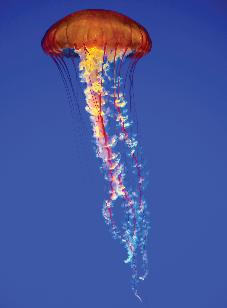


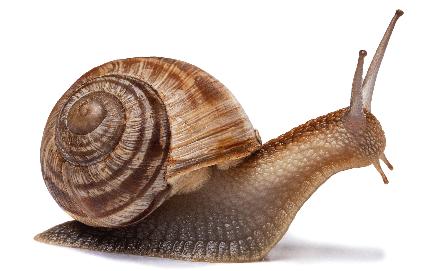
Check your learning 5.7
Check your learning 5.7 Complete these questions online or in your workbook.
Retrieve
1 A nimals are divided into two main groups.
a Identify the names of the groups.
b Name the main characteristic of each group.
2 State the percentage of animals that are invertebrates.
3 Recall two examples of animals with an exoskeleton.
4 Recall two examples of animals with no skeleton at all.
Analyse
5 Beetles have segmented bodies and jointed legs. Identify the phylum that contains the beetles.
6 Consider an animal with the following characteristics: a non-spongy soft body, with many tentacles around the mouth. Use Table 1 to identify the group that a scientist would place it in.
Apply
7 E ighty per cent of animals on Earth are arthropods.
a Discuss what characteristic the name arthropod suggests. (Hint: Consider “arthritis” and “podiatrist”.)
b Draw three different arthropods and label the features that make them part of this phylum.
Skills builder: Processing and analysing information
8 Use the tabular key (Table 1) to classify the organism in Figure 3. (THINK: What features can you observe to answer the questions in the key?)
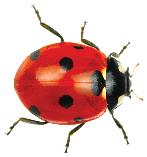
Caution
• Scalpels are extremely sharp. Use with great care.
• A lways wear gloves when handling the animals. Some students may have latex allergies and will need to use latex-free gloves.
• A nimals must always be on the dissecting board when they are being handled or dissected.
• Cut away from hands.
• I f you cut yourself, remove the gloves and wash the cut under clean water. Tell your teacher. Apply antiseptic to the cut and cover it with a dressing.
Aim
To examine the skeletal structures of three marine organisms
Materials
• 1 f ish (whole)
• 1 prawn
• 1 squid
• D issecting board
• D issecting kit
• Newspaper
• Pair of vinyl or latex gloves
• D isinfectant
Method
1 Observe the external features of the fish.

2 Carefully cut the fish in half lengthways so that you can see the internal skeleton.
3 Observe the skeleton of the fish.

4 Touch the outside surface of the prawn. Identify the connections between the hard surfaces. Peel the outer shell off the prawn.
5 Cut the prawn in half lengthways and observe the insides.
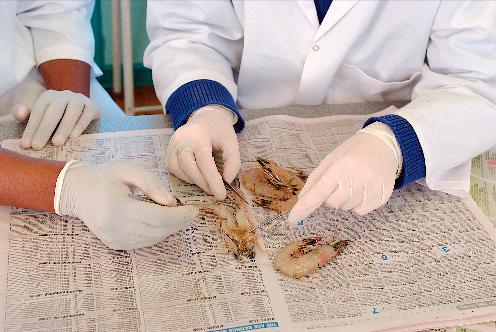
3 Cut the prawn in half lengthways.
6 Feel the outside surface of the squid.
7 Cut the squid in half lengthways and observe the insides.

Figure 4 Cut the squid in half lengthways.
8 Place scalpels in a container to be cleaned. Wrap dissected fish, squid and prawn in the newspaper. Place in a sealed plastic bag with disinfectant and dispose of in the general rubbish bin.
Draw labelled diagrams of the skeleton of each specimen.
1 Consider the fish.
a Identify the location of the fish skeleton.
b Identify the type of skeleton found in the fish.
2 Consider the prawn.
a Identify the location of the prawn skeleton.
b Identify the type of skeleton found on the prawn.
3 Describe how the squid maintains its shape.
4 Identify the group (vertebrate or invertebrate) that each of the organisms –fish, prawn and squid – belongs to. Justify your answer by comparing the key features that are used to identify the classification group with features you identified on your organism.
5 Identify the classification group to which you belong (vertebrate or invertebrate). Justify your answer by comparing your features with the features that are used to identify your chosen group.
Describe the types of skeletons that you observed and how they helped you classify the organisms.
To use the identifying features of invertebrates to classify using a tabular key
• Vinyl or latex gloves
• Tweezers
• Jars with lids
• Paper
• Pencil
• M agnifying glass or stereomicroscope
• Petri dishes
Alternatively, your teacher may provide prepared samples for you to look at. Complete the classification exercise for each prepared sample.
1 Visit a local natural environment (e.g. a garden, beach, park or pond) and observe invertebrate specimens.
2 Wearing gloves, use tweezers to collect up to 10 invertebrate specimens in separate jars.
–Do not touch any animal that might bite or sting. Check with your teacher if you are unsure.
–Use tweezers to pick up the animals.
–Place any animal immediately in a jar and secure the lid.
3 Use the tabular key in Table 1 (page 20) in Lesson 5.7 Animals that have no skeleton
are called invertebrates (page 19) to classify each invertebrate into its phylum.
4 Sketch each invertebrate. Use a magnifying glass or stereomicroscope to help you observe their features. Write the common name for the invertebrate (if you can) and write its classification group (phylum) under the drawing.
5 Return the invertebrates to their natural environment after you have finished.
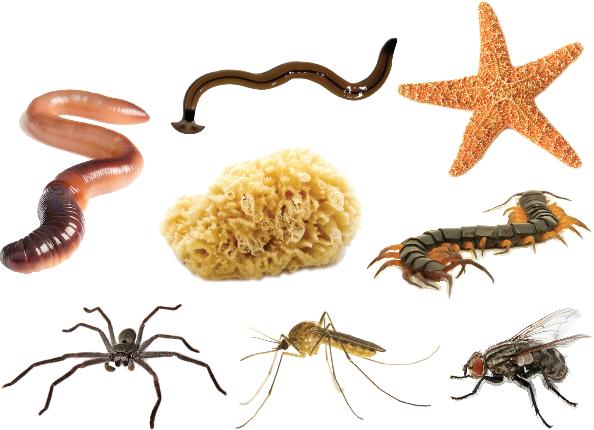
1 Identify the common characteristic of all the invertebrates you observed.
2 Describe the key characteristics that allowed you to recognise and classify the organisms you collected.
3 Use one of the concept maps discussed in Lesson 5.2 Classification keys are visual tools (page 5) to present the classification of your organisms.
Learning intentions and success criteria
→ Vertebrates are animals with a spine or backbone.
→ Vertebrates can be divided into classes based on their body covering, how their young are born and their body temperature.
→ Endotherms have a constant body temperature.
→ Ectotherms have a body temperature that changes with the environment.
Vertebrates are animals that have bones or skeletons on the inside of their body. We often use the term “vertebra” to describe the bones that make up our backbone. These bones protect the special nerves that run from our brain to the rest of our body. There are five groups or classes of vertebrates: Mammalia, Aves, Reptilia, Amphibia and Pisces.
class taxonomic level between phylum and order
endotherm an organism that has a constant body temperature regardless of the temperature of its environment
All mammals belong in the class Mammalia. Mammalia is a class of vertebrates well known to many people. Many of our pets belong to this class: horses, dogs, cats, rabbits, guinea pigs and mice. We belong to this class too. Mammals are animals with hair or fur. They are known as endotherms because they can keep their body temperature constant. This means their body temperature remains the same despite the environment being hot or cold. Female mammals give birth to live young and feed their young with their own milk.
Class Mammalia can be further divided into three subgroups (Figure 1). The main feature used to separate mammals is the way in which their young develop.
• Monotremes are platypuses and echidnas. They lay soft-shelled eggs that contain immature young.
• M arsupials, such as kangaroos and wombats, are mammals with pouches. Their young are born immature and need to spend the first few months in their mother’s pouch.
• Placentals, such as dingoes and humans, give birth to live young. The unborn young are given nutrients via a placenta inside the mother’s uterus.



All birds belong in the class Aves. Like mammals, they are endotherms (having a constant body temperature). Two of their main distinguishing characteristics (the way they differ from the other classes) are their covering of feathers and their scaly legs (Figure 2). All animals in this class lay eggs with a hard shell.
Reptiles, such as snakes (Figure 3) and lizards, belong in the class Reptilia. The skin of reptiles is usually covered in a layer of fine scales. Reptiles use lungs to breathe, even if they live under water (sea snakes). These animals are ectotherms because their body temperature is always very similar to the environment. We do not use the term “cold-blooded” to describe these animals because a lizard that has been lying in the sun has very warm blood, even though at night its blood is cool.
Turtles also belong to this class. Many people are confused by the hard outer shell of turtles and tortoises, thinking it is an exoskeleton. Underneath the shell there is a hard backbone with a spinal cord running through it (Figure 4).



ectotherm an organism with a body temperature that changes with the environment
Amphibians, such as frogs, belong in the class Amphibia. Like reptiles, amphibians are ectotherms; however, the skin of amphibians is usually soft and slimy to touch. They lay their eggs, which do not have hard shells, in water. For the first part of their life, amphibians have gills and live in the water. As they get older, lungs develop and they become able to live on land. The only remaining group of native amphibians in Australia is frogs. In other parts of the world, caecilians and salamanders may be found.
Fish belong in the class Pisces. Most fish are ectotherms. They are covered in a layer of scales and most have fins. They spend all their life in water and need gills to breathe. Fish are further grouped according to their skeleton. Sharks, rays and skates have a skeleton made entirely of cartilage, whereas all other fish have bony skeletons.
Check your learning 5.10

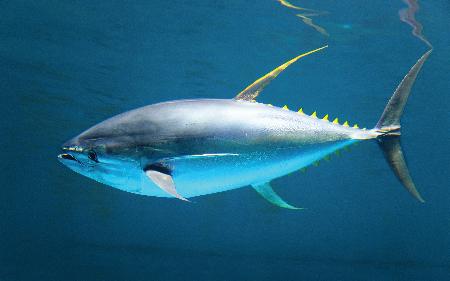
Check your learning 5.10 Complete these questions online or in your workbook.
Retrieve
1 T he vertebrates have five classes: Mammalia, Reptilia, Amphibia, Aves and Pisces. Identify the common names for each of these classes.
Comprehend
2 Describe the main characteristics of mammals.
Analyse
3 C ontrast the appearance of a placental mammal when it is born with that of a monotreme and a marsupial.
Apply
4 A dolphin lives in the ocean and has fins. It breathes air, gives birth to live young and feeds them milk. Identify the class that the dolphin belongs in. Justify your answer
(by comparing the characteristics of the class with the characteristics of the dolphin).
5 A flying fox can glide through the air like a bird but is covered in fur. Identify the class that the flying fox belongs in. Justify your answer.
6 Seals have fins like fish and live on the land and in the water like amphibians.
a Investigate how a seal’s young are born.
b Given that the seal has long whiskers, is endothermic and breathes air, identify the class of vertebrate in which a seal belongs.
Skills builder: Communication
7 C onstruct a dichotomous key to show the five classes of vertebrates. (THINK: What information needs to be included to explain the different classes to someone who does not know about them?)
Aim
To identify a variety of different vertebrates
• A 3 paper
• Pencils
What to do:
Task 1: Vertebrate alphabet graffiti
This task could also be completed as a webpage, with images and links to further information about each animal.
1 Your teacher will divide your class into five groups. Each group will be allocated one class of vertebrate.
2 L abel an A3 sheet of paper with the name of your class of vertebrate.
3 Write the letters of the alphabet down the left-hand side of the page.
4 Identify an animal in your class of vertebrate that starts with each letter. When finished, you will have the names of up to 26 different vertebrates. Some letters will be harder to complete than others.
5 P ut the finished sheets up around the room.
A jellyfish graphic organiser is a good way to show how subgroups make up a whole. It can also be used to list specific examples at the same time.
1 I ndividually, go around to each of the five lists of vertebrates from Task 1 and select six animals from each class.
2 On a full page, draw five “jellyfish” connected to the main group (vertebrates), as shown in Figure 1.
BirdsMammalsFishReptilesAmphibians Vertebrates
Figure 1 A jellyfish organiser for vertebrates
3 Identify the common name of each class (birds, mammals, fish, reptiles and amphibians) and label each jellyfish.
4 Describe the characteristics of each class under each jellyfish.
5 C lassify the six animals you selected from each class by placing them along the six tentacles of each jellyfish.
Learning intentions and success criteria
→ Plants have a variety of different characteristics that allow them to be classified into different phyla.
→ Plants can reproduce using spores or through pollination to create seeds.
→ The two groups of flowering plants are monocots and dicots.
→ Some plants use vascular tissue to transport water to the leaves.
spore a tiny reproductive structure that, unlike a gamete, does not need to fuse with another cell to form a new organism
Planting a seed and watching it grow is something many people do. But not all plants have seeds. Some plants, such as ferns, produce spores . Spores are much smaller than seeds and only contain half the genetic material needed to make a fern. They can be found clinging to the underside of a fern frond (Figure 1).
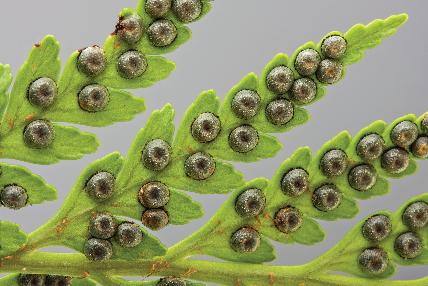
vascular tissue in a plant, tube-like structures that transport water from the roots to the leaves
Plants, like all living things, need water to survive. Many plants use their roots to absorb water and transport it through tube-like structures to the leaves. This system of tubes is called the vascular tissue of the plant and these plants are called vascular plants.
Not all plants have vascular tissue. Many plants, such as mosses and liverworts, need to live in damp places where they can absorb water through all parts of their structure (Figure 2). These plants are called non-vascular plants.

Most plants in your school or home garden produce flowers. Flowering plants are called angiosperms. Flowers are the way plants attract birds and insects to encourage pollination. Pollination is the transfer of pollen from the male part of a plant to the female part of a plant. Plants with flowers use pollination to reproduce (produce seeds). Not all plants have true flowers. Conifers have needle-like leaves and produce cones instead of flowers (Figure 3). Pollen from one cone is often transferred to another cone (pollination) so that a seed can be produced. Plants that produce seeds without true flowers are called gymnosperms.
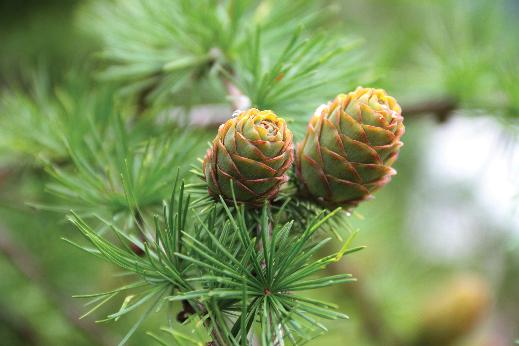
Flowering plants can be divided into two main groups: monocotyledons and dicotyledons. Monocotyledons (monocots) have a single leaf that grows from the seed. They can usually be recognised by the parallel veins in the leaves and by counting the number of petals in the flowers. Monocot flowers always have petals that are multiples of three (Figure 4).
Dicotyledons (dicots) grow two leaves from the seed. Their leaves have veins that are reticulated (spread out from a central vein), and they tend to have four or five petals on each flower (Figure 5).
The dichotomous key in Figure 6 can be used to classify plants using their features.


pollination the transfer of pollen to a stigma, ovule, flower or plant to allow fertilisation monocotyledon flowering plant that has one leaf growing from the seed
dicotyledon flowering plant that has two leaves growing from the seed
Bryophytes
Algae Dicotyledons Monocotyledons
Liverworts
Mosses
Check your learning 5.12 Complete these questions online or in your workbook.
1 Describe how ferns and conifers reproduce.
Analyse
2 Use the key in Figure 6 to identify the features of the following plants:
a ferns
b mosses
3 Use the key in Figure 6 to identify the following plants:
a fr uit tree
b palm tree
c g reen weed in a fish tank
d maidenhair fern
e bird nest fern
f moss on the path
g rose bush
h vegetables
i pine tree
j g rass and lawn.
4 C ontrast (the differences between) vascular and non-vascular plants.
5 W ho am I? I am large and green. I use sunlight to make my own food. I smell nice
and like to come inside at Christmas. Some people do not like me because my leaves can be prickly and needle-like. I make seeds but use cones rather than flowers to reproduce. Use Figure 6 to c ategorise me into the plant group I belong to.
Apply
6 L ocate a plant in your garden.
a Create a labelled diagram of the plant.
b Identify the features that could be used to classify the plant.
c Propose at least one feature that is not currently present that would help you to classify the plant.
d Use Figure 6 to classify the plant.
Skills builder: Problem solving
7 I s it better to be a vascular or non-vascular plant in a dry climate? Evaluate the advantages of vascular plants and nonvascular plants for surviving in dry weather. (THINK: Describe the features that help each type of plant to survive and compare them to make your decision.)
To identify the different characteristics that can be used to classify a plant.
• Camera
• Measuring tape
• Pencils
• Paper What to do:
1 Observe and take digital photos of at least five different types of plants from a local bushland or from your garden.
2 M ake detailed observations of each plant, including:
a the height of the plant
b the width of the plant
c the shape, smell, texture and size of the leaves (take a close-up photo of the leaves)
d the position and number of leaves on the plant.
3 Describe the plant’s flowers, seeds or nuts.
4 Describe any other unusual or special features of the plant.
5 Repeat steps 2 to 4 for all the plants you observed.
1 Identify and describe the features the plants have in common.
2 C ontrast the features that you have observed between the plants.
3 C reate a dichotomous key showing these features that can be used by students in other year levels.
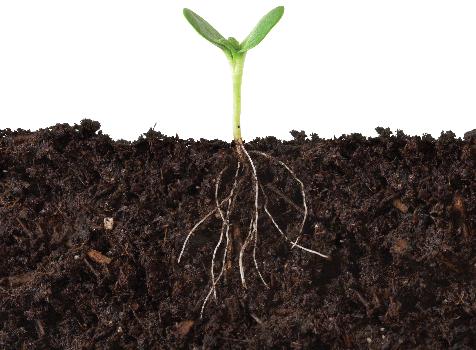
→ Despite the harsh climate, Australia is home to thousands of different organisms.
→ Aboriginal and Torres Strait Islander Peoples were the first to identify and classify the organisms that are unique to Australia.
Early European visitors to Australia often depended on the Aboriginal and Torres Strait Islander Peoples to identify and describe the plants and animals that were new and unfamiliar to them. This can be seen in the names that were given to Australian animals “discovered” by European scientists. Uniquely Australian mammals such as the wulaba (wallaby), buduru (potoroo), wularu (wallaroo), wumbat (wombat) and dingu (dingo) were all first classified by the Dharawal people of the Sydney basin region in New South Wales.
When Europeans first visited Ulu r u and Kata Tjut a (the Olgas) in the 1870s, they were confronted with a harsh landscape. Their initial aim was to find a route for the overland telegraph line from Adelaide to the Top End and to set up pastures for sheep and cattle grazing. They soon decided that the region was unsuitable and left.
In contrast, the traditional owners of the land, the Anangupeople of the Western Desert region in central Australia, which includes Uluru and Kata Tjut a, have lived on this land for thousands of years and understand it well. The Anangu people classify their environment to help them navigate and manage Country. They use the following names:
• puti: open woodland; after the rains, this area has an abundance of grass, which the kangaroos eat, and honey ants build their nests in this area
• pila: spinifex plains, low areas between dunes; this is the best place to gather seeds to eat
• puli: rocky areas, gorges, stony slopes; animals come to this area to find shelter and water.


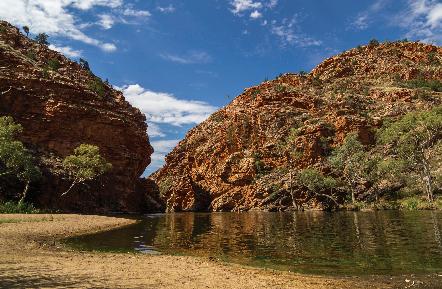
Mammals are rarely seen during the day in Ulur u-Kata Tjuta National Park. Most are nocturnal and come out in the evening, avoiding the heat of the daytime desert.
Mammals are divided into three groups: placentals, marsupials and monotremes. Australia has unique populations of monotremes found nowhere else in the world. This initially confused European classification scientists who did not believe such animals as the platypus and echidna existed as they did not fit into the classification system that existed at the time.


As Australia has been an island for a long time, it also has a unique population of marsupials. Marsupials such as the bilby (t jalku), which is a very important animal for the Anangu people, give birth to underdeveloped young. They protect their young by having a pouch in which further development can occur. The pouch is similar to that of a kangaroo; however, it is a backward-opening pouch. When the young are fully developed, they can leave the pouch and survive the harsh climate.
The Yanyuwa people of the Gulf of Carpentaria region in the Northern Territory classify all organisms according to where they are found. Their classification system is first divided into two broad categories: coastal/marine or inland. This is then further divided according to the characteristics of the organism.
For example, walya can refer to all dugongs and sea turtles. This is divided into 16 further names according to the dugong’s age, size, biological sex, and even the leadership position the dugong has within its herd. This classification is much more detailed than the descriptions in the Linnaean system and demonstrates a scientific interest in life cycles and behaviour of living things.
Check your learning 5.14
Check your learning 5.14 Complete these questions online or in your workbook.
Retrieve
1 T he A nangu people of the Western Desert region have many names for the different reptiles that live on Country; however, they have fewer names for amphibians. Identify the characteristics of amphibians that would make it difficult for them to live in arid environments.
2 M any early European settlers may have initially thought the bilby (t jalku) was a rat. Identify one reason why they would have made this mistake.
3 Ex plain why the Anangu people devised a system of classification for the natural habitats around them.
Analyse
4 I nfer why monotremes would find it difficult to breed in arid environments.
Apply
5 I nvestigate the animals found in the Ulu r u-Kata Tjuta National Park. Choose
five animals and classify each animal as a mammal, reptile, bird or invertebrate.
6 I nvestigate the kind of environment that the Anangu people lived in and the foods they ate to survive. List at least five animals and five plants they ate.
7 I n a group of four, use a large sheet of paper to create two collages about what you would expect to find in Ulur u-Kata Tjuta National Park. The first collage should show living things; and the second should show nonliving things. One pair should create the “living” collage and the other pair should create the “non-living” collage.
8 I nvestigate which mammals can be found in Australia’s arid environments.
9 C lassify each of these mammals as a placental, monotreme or marsupial.
a L ist the scientific name (genus and species) of each animal.
b C lassify and name one of these mammals using a classification system of a group of Aboriginal and Torres Strait Islander Peoples.
Taxonomists are scientists who research the classification of new species. There are many organisms in Australia that are yet to be identified. This requires the identification and analysis of primary and secondary data to classify and name the new organism.
When a new organism is discovered, it must first be compared with other known organisms to determine if it is different and unique.
First, the process of discovering new species is not easy and various technologies are used. This is followed by a systematic way of determining its uniqueness. For example, a scientific expedition to Western Australia’s remote Mid West region in 2024 uncovered a host of animal species never before seen in the area. Twenty-four species were recorded for the first time near Yalgoo, north-east of Perth. It started with a wildlife survey involving researchers digging pitfall fraps and using motion sensor cameras to identify small, often rare animals living on the arid red landscape of Barnabinmah Station (Figure 1). These twentyfour species had not been known to live in the area, and their discovery on Barnabinmah means data on their geographical range will need to be updated.
Researchers and taxonomists from the Department of Biodiversity, Conservation and Attractions (DBCA), WA Museum and Badimia Bandi Barna Aboriginal Corporation were involved. A total of 305 small animals, including birds, lizards, marsupials and frogs were captured. The newly reported species included the southern shovelnosed snake (Figure 2) and the spotted military dragon (Figure 3). As it was


type specimen the specimen used for naming and describing a new species
the first time this area’s wildlife had been sampled, it was significant in that discovering and classifying these species fills an important gap in the knowledge of animals species living in this ecosystem. First Nations elders contributed to sharing the traditional names of these species as DBCA worked on the scientific names with the help of taxonomists.
The work of taxonomists is exciting as in the discovery process, they may chance to find a species classified as rare. In this expedition, a motion-sensor camera at Barnabinmah also captured a photo of a malleefowl (Figure 4), a species classified as (or likely to become) extinct, critically endangered or vulnerable in other states and territories. It is important to note that most these animals were released with only some retained in the WA Museum for further studies.


When a specimen is collected, it is not always known if it is a fully-mature organism. The specimen needs to be compared with other types of specimens. A type specimen is usually one of the first organisms that is collected for each species. It could be a dried plant, a preserved animal or a fossil. These specimens are usually stored in a museum or herbarium.
There are many rules that must be followed when a new organism is identified. Before it can be named, the organism must be accurately described, drawn and a type of specimen preserved. The phylum, class, order and genus must be identified before the species can be named. One of the rules is that the organism cannot be named after the scientist who discovered it. This means that if you find a new species and go through the taxonomy process, you can not use your own name.
This does not mean you cannot name it after someone else. Many famous people have animals named after them. In 2012, a new species of horse fly was identified in Queensland by Australian entomologist Bryan Lessard. This horsefly with a golden back, Scaptia beyonceae, was named after the singer Beyonce (Figure 5).

Other taxonomists used names to indicate their sense of humour, including beetles named ‘not another one’ (Cyclocephala nodanotherwon) and flies named ‘piece of cake’ (Pieza kake).
There are two sources of data that can be used in scientific research such as taxonomy. Primary data is data collected directly by the scientist. Secondary data is data that has already been collected by other scientists. When naming a new organism, the primary data includes the drawings and descriptions of newly discovered organisms. This is then compared with the secondary data, such as other samples that are stored by the CSIRO in the National Research Collections Australia. However, not all secondary sources of information are as trustworthy as the CSIRO.
Identify a source of information located on a website of your choice and answer the following questions.
1 Identify who wrote the information or gathered the data. Did they make their observations or measurements in a fair manner, or were they biased (had already decided what they wanted to observe)?
2 I s the source of information a primary source (did the authors make the measurements themselves) or a secondary source (reporting on other people’s observations)?
3 W hen was the information generated? How old is the data? Is it still relevant to your needs?
4 W hy did the author write the information or gather the data? Did they want to convince the reader of their view of the world? Does the author gain anything from publishing the data?
5 W hy is it important for taxonomists to be careful in their approach to using primary and secondary data when identifying and naming new species?
primary data information that is collected directly by a researcher for a specific research project secondary data any data collected by a person other than the one using it
Lesson 5.1 L iving organisms have characteristics in common
• Biology is the study of living organisms and what it means to be alive.
• L iving things move, reproduce, need nutrition, grow, respond to change, exchange gases, produce waste and need water.
• Dead organisms were once living.
Lesson 5.2 Classification keys are visual tools
• A key is a visual tool used in the classification of organisms.
• A branched key can show the relationship between different organisms.
• Scientists use keys to identify the scientific name of an organism.
Lesson 5.4 The classification system continues to change
• T he Linnaean system has seven main levels of classification.
• Scientific names are binomial (two names): the genus and the species.
• T he modified Linnaean taxonomy system is still used today.
Lesson 5.5 Kingdoms can be used to classify organisms
• Taxonomists are scientists who classify living things.
• T he cells of organisms have features that allow us to classify them into five kingdoms: Animalia, Plantae, Fungi, Monera and Protista.
Lesson 5.7 Animals that have no skeleton are called invertebrates
• T he two main groups in the kingdom Animalia are vertebrates and invertebrates.
• E ndoskeletons are skeletons that are found inside the animal.
• E xoskeletons are hard skeletons or shells that are found on the outside of the animal.
Lesson 5.10 Vertebrates can be organised into five classes
• Vertebrates are animals with a spine or backbone.
• Vertebrates can be divided into classes based on their body covering, how their young are born and their body temperature.
• K ingdom Animalia contains approximately 35 phyla.
• E ndotherms have a constant body temperature.
• E ctotherms have a body temperature that changes with the environment.
Lesson 5.12 Plants can be classified according to their characteristics
• Plants have a variety of different characteristics that allow them to be classified into different phyla.
• Plants can reproduce using spores or through pollination to create seeds.
• T he two groups of flowering plants are monocots and dicots.
• Some plants use vascular tissue to transport water to the leaves.
Lesson 5.14 The first Australian scientists classified their environment
• Despite the harsh climate, Australia is home to thousands of different organisms.
• Aboriginal and Torres Strait Islander Peoples were the first to identify and classify the organisms that are unique to Australia.
Review questions: Module 5
Retrieve
1 Identify a reason for classifying living things.
A C lassification helps scientists invent more ways of discussing organisms.
B C lassification helps scientists to communicate new discoveries.
C C lassification helps scientists to keep new information to themselves.
D C lassification helps scientists to shelter living things.
2 Identify which of the following is an example of a microorganism.
A Bacterium
B C hicken
C Kelp
D Sand
3 Identify an example of plants moving by themselves.
4 Name the five main classes of vertebrates and give an example of each.
5 Name two phyla of invertebrates and give an example of each.
6 Describe the advantages of using a dichotomous key.
7 Ex plain why it is important for taxonomists to use a common system to group all living things on Earth.
8 Describe two ways the classification system has changed since Carolus Linnaeus first identified three kingdoms of plants, animals and minerals.
9 Identify a plant (or plants) that has the following characteristics.
a Spores
b Seeds
c Vascular tissues
10 Identify an example of a plant that does not have flowers with petals. Describe the alternative structure that allows the plant to produce seeds.
11 “Biodiversity” is the word used by scientists to describe a variety of different organisms in the same region. Explain why it is important to preserve a large biodiversity of plants and animals in the world.
12 I magine that an unknown organism was discovered during a space mission and brought back to Earth. Briefly describe two different methods that scientists could use to decide whether it was living or non-living.
13 Compare the identifying characteristics of each of the five kingdoms.
14 C ontrast a monocotyledon leaf and a dicotyledon leaf.
15 C ontrast vertebrates and invertebrates by writing a definition for each.
16 C ategorise the items from the following list into the correct columns in Table 1.
a Stewed apple
b Phone
c Da ffodil bulb
d Headphones
e H airs in your brush
f Your teacher
g Shark’s tooth
h G erms
i Soft drink bottle
j Your pet
k Silver chain
l D inosaur skeleton

17 Use Table 2 to help you identify which phylum the following invertebrates belong to: a centipede b octopus c coral d leech.
18 L ook at Figure 2 and Figure 3 and identify which class each vertebrate belongs to.

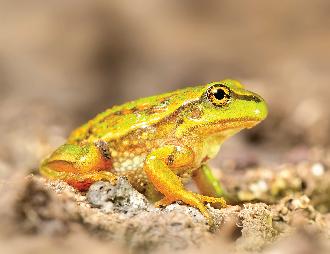
19 Refer to Figure 1 (page 6) in Lesson 5.2
Classification keys are visual tools (page 5) showing Dr Redback’s family. Propose how the keys in Figure 2 (page 7) and Table 1
(page 7) in Lesson 5.2 Classification keys are visual tools (page 5) could be modified if his family included his sister, Melinda; his mother, Frances; his two daughters, Stef and Gemma (Stef wears glasses); and he had a pet lizard named Stealth but not a bird named Charlie.
20 One of the main contributors to the Encyclopedia of Life is the Atlas of Living Australia . Do an internet search for the Atlas of Living Australia , select “Community and Schools” and click on “Explore your area”. From this page, you can create a species list and map for the area in which you live.
a Identify the most frequently seen animal in your area.
b Identify the most frequently seen plant in your area.
21 L ook at Table 3, showing the number of living things on Earth.
a Determine the number of plant species that were estimated to be on Earth in 2009.
b C ontrast the number of known plant species with the total number of known animal species (add animals without a backbone and animals with a backbone together).
Source: Chapman, A. D. 2009, Numbers of Living Species in Australia and
, 2nd edn.
22 T here is often conflict between the rights of different animals depending on how they are classified. For example, there are many more rules and restrictions around the use of vertebrate animals in research, compared to invertebrates. Write two reasons that support the argument that vertebrates (with a central spinal cord carrying nerves to the brain) should not be used for research. Write two reasons why invertebrates do not have the same protections as vertebrates. Discuss the reasons with others in your class. Compare the different views in the classroom and the arguments that support all the opinions provided.
Critical and creative thinking
23 Download and print a copy of Figure 4.
a Cut out the pictures of the insects.
b On your own, sort the insects into groups based on appearance. Justify your system of
classification (by explaining why you made each decision).
c Compare your groupings with those of a partner. Together, identify a third way to classify the insects.
d With your partner, create a dichotomous key.
24 E ach Aboriginal and Torres Strait Islander culture has unique words for the different animals on Country. An example is the quokka which is known as “gwaga” by the Whadjuk Noongar people of Western Australia, and “kwoka” by the Menang people in Augusta, King George Sound region and Albany in Western Australia. Explain why the name “quokka” from Perth, Western Australia was adopted first by European settlers and is used most commonly in Australia today.
25 Design an experiment to show that plants are living things that respond to stimuli. Choose one stimulus (such as reaction to light or a lack of water) to investigate. This stimulus is the experimental variable, so you will need to change the variable in some way and control the rest of the variables. Make a list of the equipment you would need.
26 Discuss why the invention of the microscope was important to the development of the classification system.
Research
27 C hoose one of the following topics to present a report in a format of your choice. Some ideas have been included to get you started. Your report must include a classification key.
Write a newspaper article about how life on Earth is organised. It needs to be about two pages long (no more than 500 words). In your article:
• Ex plain how living things are classified for an audience unfamiliar with science.
• L ist the living things whose images you would like to use to illustrate the article.
• Identify their scientific and common names.
• Develop a key.
You have just returned from a trip to a remote mountain area of the Kimberley, in Western Australia. While there, you took your portable microscope and examined water from a previously unknown lake. To your surprise, you found some new creatures in the water that look a bit like bacteria. They are single-celled and are either square or oval; some are hairy (have hairs either on the end of the cell or along the edge of the whole cell).
• D raw six different versions of these organisms.
• C reate a dichotomous key for these six new organisms so that you can describe them to other scientists.
• Name each of the groups at the bottom of your key.
• A ssuming they are a type of bacterium, identify the kingdom to which they would belong.
Living organisms are not the only things that can be classified. The remains or impressions of prehistoric plants or animals that are found in rock can also be classified according to their unique characteristics.
• Identify a photo of a fossil.
• Describe the characteristics that could be used to classify it.
• Identify the group it could belong to in the Linnaean classification system.
• Justify your decision by comparing it to another organisms in the same group.